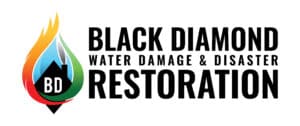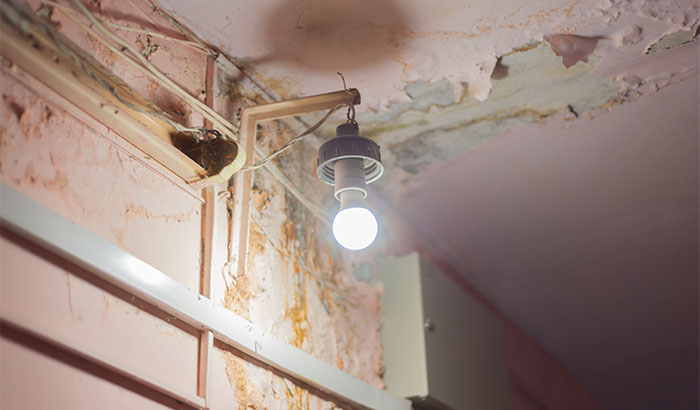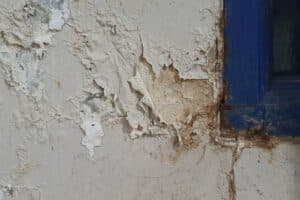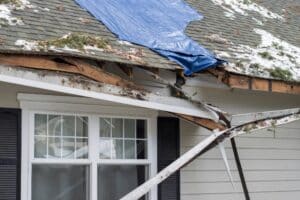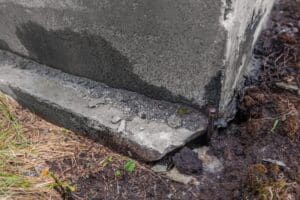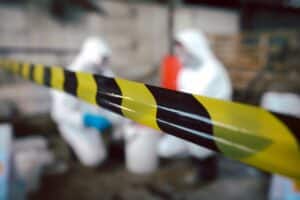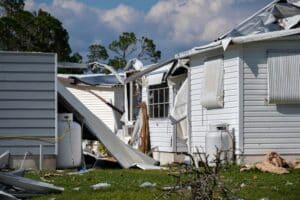Sewage damage can lead to numerous problems within a property, including electrical damage. This article will explore 25 ways sewage damage can affect electrical systems. By understanding these impacts, you can proactively mitigate risks and protect your property.
Let’s delve into the details:
- Waterlogging and Short Circuits: When sewage infiltrates a building, it can cause extensive waterlogging. This excess moisture can seep into electrical outlets and wiring, leading to short circuits, as water is a conductor of electricity.
Short circuits occur when an unintended path of low resistance is created, resulting in an electrical current overload and potentially causing fires or damaging electrical components.
- Corrosion of Electrical Components: Sewage contains various corrosive agents such as acids, salts, and chemicals. When these substances come into contact with electrical components, they can corrode the wiring, connectors, switches, and circuit boards, leading to malfunctions or failures. Corrosion weakens the conductive properties of the affected components, impairing their ability to transmit electricity effectively.
- Damage to Electrical Insulation: Sewage water can compromise the insulation around electrical wires, reducing their ability to resist the electric current. This can result in electrical leakage, increased resistance, and potential electrical shocks. Insulation damage exposes wires to moisture and contaminants, creating hazardous conditions and increasing the risk of electrocution.
- Contamination of Circuit Breakers and Fuse Boxes: When sewage enters a property, it can contaminate circuit breakers and fuse boxes. This contamination interferes with their proper functioning, potentially leading to faulty tripping or inadequate protection against electrical surges.
Sewage debris and moisture within these protective devices can cause them to become clogged or corroded, rendering them ineffective in safeguarding electrical systems.
- Destruction of Grounding Systems: Sewage damage can erode or compromise the grounding systems in a building. Grounding systems provide a safe path for electrical currents to dissipate, protecting the electrical system and individuals from electrical shocks.
When sewage infiltrates grounding components such as grounding rods or conductors, it can disrupt the proper flow of electricity and increase the risk of electrical faults, surges, and shocks.
- Malfunctioning of Electrical Appliances: Sewage water can infiltrate electrical appliances, damaging their internal circuitry and components. This can lead to malfunctions or failures of refrigerators, washing machines, and HVAC systems.
The presence of sewage water compromises the insulation, corrodes the circuit boards, and damages sensitive electronic components, rendering the appliances inoperable.
- Impaired Performance of Electrical Panels: Sewage damage can adversely affect electrical panels that distribute electricity throughout a building. Water and contaminants from sewage can infiltrate the panels, causing corrosion and electrical short circuits.
As a result, electrical panels may fail to distribute power properly, leading to irregular voltage, frequent tripping of breakers, and disruption of the electrical supply.
- Degradation of Electrical Wiring: Sewage exposure can degrade electrical wiring, impacting its integrity and conductivity. The moisture, chemicals, and contaminants in sewage water can lead to the deterioration of insulation around wires, making them prone to short circuits, electrical leakage, and damage. This degradation compromises the safety and efficiency of the electrical system.
- Fire Hazards: Sewage damage poses a significant fire hazard. When sewage water comes into contact with electrical components, it can cause electrical sparks or overheating. Flammable gases or substances present in sewage can also increase the risk of fire when combined with electrical faults or sparks. The combination of sewage and electricity creates a dangerous situation that can lead to devastating fires.
- Electrical System Overloads: Sewage damage may result in electrical system overloads. Introducing excessive moisture and debris into electrical systems can cause electrical conductors to come into contact with each other or with grounded surfaces. These unintentional connections can lead to overloads, as the current exceeds the capacity of the wiring or equipment, potentially resulting in electrical damage, outages, or fires.
- Damage to Electrical Conduits: Sewage infiltration can damage the electrical conduits that house and protect electrical wires. Sewage water can corrode the conduits, leading to structural weakening, leaks, or even collapse. Damaged conduits compromise the integrity of the electrical wiring and increase the risk of moisture intrusion and subsequent electrical damage.
- Interference with Electrical Ground Fault Circuit Interrupters (GFCIs): GFCIs are essential safety devices that protect against electrical shocks in moisture-prone areas, such as bathrooms and kitchens.
Sewage damage can interfere with the proper functioning of GFCIs, rendering them ineffective in detecting ground faults and protecting individuals from electrocution. Water and contaminants can compromise the internal mechanisms of GFCIs, impairing their ability to detect electrical imbalances.
- Damage to Electrical Transformers: Sewage water can cause damage to electrical transformers, which are responsible for stepping up or down electrical voltage.
Transformers contain sensitive electrical components, including coils and insulating materials, which sewage infiltration can severely impact. Corrosion, insulation degradation, and short circuits within transformers can result in power surges, equipment failures, and potential electrical hazards.
- Inadequate Power Distribution: Sewage damage can disrupt electrical power distribution within a building. When water and debris infiltrate the distribution system, they can cause blockages, increase resistance, or damage electrical components, resulting in inconsistent power distribution. This can lead to voltage fluctuations, unreliable electrical supply, and potential damage to connected devices.
- Malfunctioning of Electrical Control Systems: Sewage damage can impair the operation of electrical control systems, such as those found in HVAC systems, lighting controls, or automated processes.
Moisture and contaminants from sewage can interfere with the sensors, switches, relays, and circuitry within these systems, causing malfunctions, incorrect readings, or complete failures. This disruption can compromise the building’s electrical control systems’ comfort, safety, and efficiency.
- Impacted Emergency Backup Systems: Sewage damage can affect emergency backup systems, such as generators or uninterruptible power supply (UPS) units. These systems provide crucial power during outages or emergencies. Infiltration of sewage water into backup systems can lead to corrosion, short circuits, or malfunctioning of electrical components, rendering the emergency power supply unreliable or completely non-functional when needed.
- Damaged Communication Systems: Sewage damage can impact communication systems, including telephone lines, data cables, and networking infrastructure. Moisture and contaminants from sewage can corrode or short-circuit these systems, leading to disrupted communication, data loss, or compromised network connections. Repairing or replacing damaged communication systems can be expensive and time-consuming.
- Impaired Security Systems: Sewage damage can compromise the integrity of security systems, such as alarms, access control systems, or surveillance cameras. Moisture infiltration can corrode or short-circuit sensitive components, impairing their functionality. Malfunctioning security systems can leave a property vulnerable to unauthorized access, compromising the safety and security of the premises.
- Electrochemical Reactions: The presence of sewage contaminants, particularly salts and chemicals, can trigger electrochemical reactions when combined with the electrical currents within a building. These reactions can accelerate corrosion, further damaging electrical components and exacerbating the risks of electrical failures and safety hazards.
- Health and Safety Hazards: Sewage damage introduces biological contaminants and pathogens that pose health risks to occupants. These contaminants can create a hazardous environment when they come into contact with electrical systems.
For example, mold growth resulting from sewage damage can produce volatile organic compounds (VOCs) that can corrode electrical components, compromise insulation, and degrade air quality.
- Increased Risk of Electric Shock: Sewage damage can heighten occupants’ risk of electric shock. Waterlogged areas, compromised insulation, and damaged wiring increase the likelihood of electrical current flowing through unintended paths. Occupants may be exposed to electrical shocks when contacting contaminated water, appliances, or surfaces affected by sewage damage.
- Structural Damage to Buildings: In extreme cases of sewage damage, electrical systems can contribute to structural damage. Electrical fires or short circuits can cause significant destruction to building materials, compromising the integrity and safety of the structure. This can lead to costly repairs and potential risks to the occupants.
- Environmental Impact: Electrical damage resulting from sewage damage can have an adverse environmental impact. Disrupted electrical systems may cause power outages, equipment failures, and the potential release of harmful substances. Electrical fires resulting from sewage damage can also contribute to air pollution and generate hazardous waste from extinguishing efforts.
- Financial Consequences: Sewage-related electrical damage can lead to substantial financial burdens. Repairing or replacing damaged electrical components, appliances, systems, and structural elements can be costly. The impact on productivity, loss of income, and increased insurance premiums further add to the financial strain.
- Regulatory Compliance: Sewage damage that causes electrical damage may result in non-compliance with building codes and safety regulations. Failure to rectify electrical issues promptly and ensure a safe environment can lead to legal consequences, fines, or restrictions on property usage.
Understanding how sewage damage can cause electrical damage is crucial for safeguarding your property and ensuring the safety of occupants. By taking preventive measures such as regular inspections, proper maintenance, and prompt mitigation of sewage issues, you can minimize the risks of electrical damage and its associated consequences.
Additionally, consulting with professionals in sewage cleanup and electrical repairs is essential to effectively restore the integrity of your property’s electrical systems.
But not just any professional…
Black Diamond Water Damage & Disaster Restoration
At Black Diamond Water Damage & Disaster Restoration, our team of skilled professionals specializes in sewage damage cleanup, ensuring a thorough and secure restoration process.
We prioritize the effective and safe cleaning of affected areas. If you need sewage damage cleanup services, please reach out to us via our website or give us a call at (801) 316-8997. We are dedicated to swiftly returning your property to its pre-damaged state with our prompt and efficient services. Don’t wait to restore your home from sewage damage; call now!
toto slot